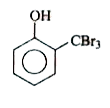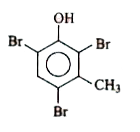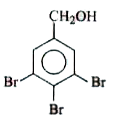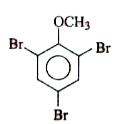Compound (A) C5H8O2 liberated CO2 on reaction with sodium bicarbonate. It exists in two forms neither of which is optically active. It yielded compound (B) C5H10O2 on hydrogenation. Compound (B) can be separated into enantiomorphs. Write structures of (A) and (B).
The correct Answer is:(A) CH3−C∣∣CH3−Hcls−COOH CH3−C∣∣H−C−CH3trans−COOH
(B) CH3.CH2.H∣C∣CH3−COOH (2-methylbutanoic acid)
To solve the problem, we need to identify the structures of compounds (A) and (B) based on the information provided.
Step 1: Analyze Compound (A)
The molecular formula of compound (A) is C₅H₈O₂. It liberates CO₂ when reacted with sodium bicarbonate (NaHCO₃), indicating that it likely contains a carboxylic acid group. Carboxylic acids react with sodium bicarbonate to produce carbon dioxide.
Step 2: Determine the Structure of Compound (A)
Given that compound (A) is C₅H₈O₂ and is a carboxylic acid, we can propose that it has a double bond (alkene) in addition to the carboxylic acid functional group. The presence of two forms that are not optically active suggests that it could exist as cis and trans isomers.
1. Cis Structure:
- The structure can be drawn as follows:
CH3|C=C|COOHCH3
This is 2-methylbut-2-enoic acid (cis form).
2. Trans Structure:
- The trans structure would be:
CH3COOH∣|C=C|CH3H
This is 2-methylbut-2-enoic acid (trans form).
Step 3: Write the IUPAC Name for Compound (A)
The IUPAC name for compound (A) is 2-methylbut-2-enoic acid.
Step 4: Analyze Compound (B)
Compound (B) has the molecular formula C₅H₁₀O₂. It is produced from compound (A) through hydrogenation, which means that the double bond in compound (A) will be converted into a single bond, resulting in a saturated compound.
Step 5: Determine the Structure of Compound (B)
Upon hydrogenation of compound (A), we add hydrogen (H₂) across the double bond:
- The structure of compound (B) after hydrogenation can be drawn as:
CH3|CH3−C−COOH|CH2
This structure corresponds to 2-methylbutanoic acid.
Step 6: Write the IUPAC Name for Compound (B)
The IUPAC name for compound (B) is 2-methylbutanoic acid. This compound can exist as enantiomers due to the presence of a chiral center.
Summary of Structures
- Compound (A):
- Structure:
- Cis:
CH3|C=C|COOHCH3
- Trans:
CH3COOH∣|C=C|CH3H
- IUPAC Name: 2-methylbut-2-enoic acid
- Compound (B):
- Structure:
CH3|CH3−C−COOH|CH2
- IUPAC Name: 2-methylbutanoic acid
The molecular formula of compound (A) is C₅H₈O₂. It liberates CO₂ when reacted with sodium bicarbonate (NaHCO₃), indicating that it likely contains a carboxylic acid group. Carboxylic acids react with sodium bicarbonate to produce carbon dioxide.
Given that compound (A) is C₅H₈O₂ and is a carboxylic acid, we can propose that it has a double bond (alkene) in addition to the carboxylic acid functional group. The presence of two forms that are not optically active suggests that it could exist as cis and trans isomers.
- The structure can be drawn as follows:
CH3|C=C|COOHCH3
This is 2-methylbut-2-enoic acid (cis form).
- The trans structure would be:
CH3COOH∣|C=C|CH3H
This is 2-methylbut-2-enoic acid (trans form).
The IUPAC name for compound (A) is 2-methylbut-2-enoic acid.
Compound (B) has the molecular formula C₅H₁₀O₂. It is produced from compound (A) through hydrogenation, which means that the double bond in compound (A) will be converted into a single bond, resulting in a saturated compound.
Upon hydrogenation of compound (A), we add hydrogen (H₂) across the double bond:
- The structure of compound (B) after hydrogenation can be drawn as:
CH3|CH3−C−COOH|CH2
This structure corresponds to 2-methylbutanoic acid.
The IUPAC name for compound (B) is 2-methylbutanoic acid. This compound can exist as enantiomers due to the presence of a chiral center.
- Compound (A):
- Structure:
- Cis:
CH3|C=C|COOHCH3
- Trans:
CH3COOH∣|C=C|CH3H
- IUPAC Name: 2-methylbut-2-enoic acid
- Structure:
CH3|CH3−C−COOH|CH2
- IUPAC Name: 2-methylbutanoic acid
Topper's Solved these Questions
- ALKENE, ALKANE & ALKYNE BOOK - ALLENCHAPTER - ALKENE, ALKANE & ALKYNE EXERCISE - EXCERSISE-1
25 Videos
- ALKENE, ALKANE & ALKYNE BOOK - ALLENCHAPTER - ALKENE, ALKANE & ALKYNE EXERCISE - EXCERSISE-2
20 Videos
- ALKENE, ALKANE & ALKYNE BOOK - ALLENCHAPTER - ALKENE, ALKANE & ALKYNE EXERCISE - EXERCISE-5[A]
68 Videos
- AIIMS 2019BOOK - ALLENCHAPTER - AIIMS 2019EXERCISE - CHEMISTRY
40 Videos
- ALKYL AND ARYL HALIDEBOOK - ALLENCHAPTER - ALKYL AND ARYL HALIDEEXERCISE - EXERCISE-05 (B)
35 Videos
Similar Questions
CH3CO2C2H5 on reaction with sodium ethoxide in ethanol gives A, which on heating in the presence of acid gives B compound B is
View SolutionAn organic compound (A) , C4H8Cl2 on hydrolysis forms another compound (B) , C4H8O.
If all possible structures of (B) visualised above in (a) and (b) are treated with Zn - Hg/HCl , what are the products ?
View Solution
Knowledge Check
An optically active compound A with molecular formula C8H14 undergoes catalytic hydrogenation to give meso compound, the structure of (A) is :
A B
B C
C D
D
An organic compound (A), C7H6O gives positive test with Tollen's reagent, on treatment with alcoholic CϴN,(A) yields the compound (B),C14H12O2. Compound (B) on reduction with Zn-Hg, HCl and dehydration gives an unsaturated compound (C), which adds on mole of Br2/CCl4. The compound (B) can oxidized with HNO3 to a compound (D), C14H10O2. Compound (D) on heating with KOH undergoes rearrangement adn subsequent acidification of rearranged products yields an acidic compound (E), C14H12O3.
Structure of compound (B) isA B
B C
C D
D
Compound (A) C7H8O is insoluble in aqueous NaHCO3 and dissolves in aqueous NaOH and gives a characteristic colour with neutral FeCl3 . When treated with Br2 (A) forms compound (B) C7H5OBr3 .
The structure of compound (B) would be :A B
B C
C D
D
A compound 'X' (C2H4O) on oxidation gives 'Y' (C2H4O2). The compound 'X' undergoes haloform reaction. Write the structure of 'X' and 'Y'.
View SolutionCompound C4H8O2 exists in various strutures as shown:

Which statement(s) is/are correct?
View SolutionAn organic compound (A) , C4H8Cl2 on hydrolysis forms another compound (B) , C4H8O.
If (B) does not responds to iodo form test , then identify possible structures of (A) and (B).
View SolutionAn optically active compound H(C5H6O) on treatment with H2 in the presence of Lindlar's catalyst gave a compound I (C5H8O). Upon hydrogenation with H2 and Pd/C, Compound H gave J (C5H12O). Both I and J were found to b optically inactive. Select the correct statements.
View SolutionCompound (A)(C4H8O3) reacts with NaHCO3 and evolves CO2(g).(A) reacts with LAH to give a compound (B) which is a chiral. The structure of (A) is:
View Solution
